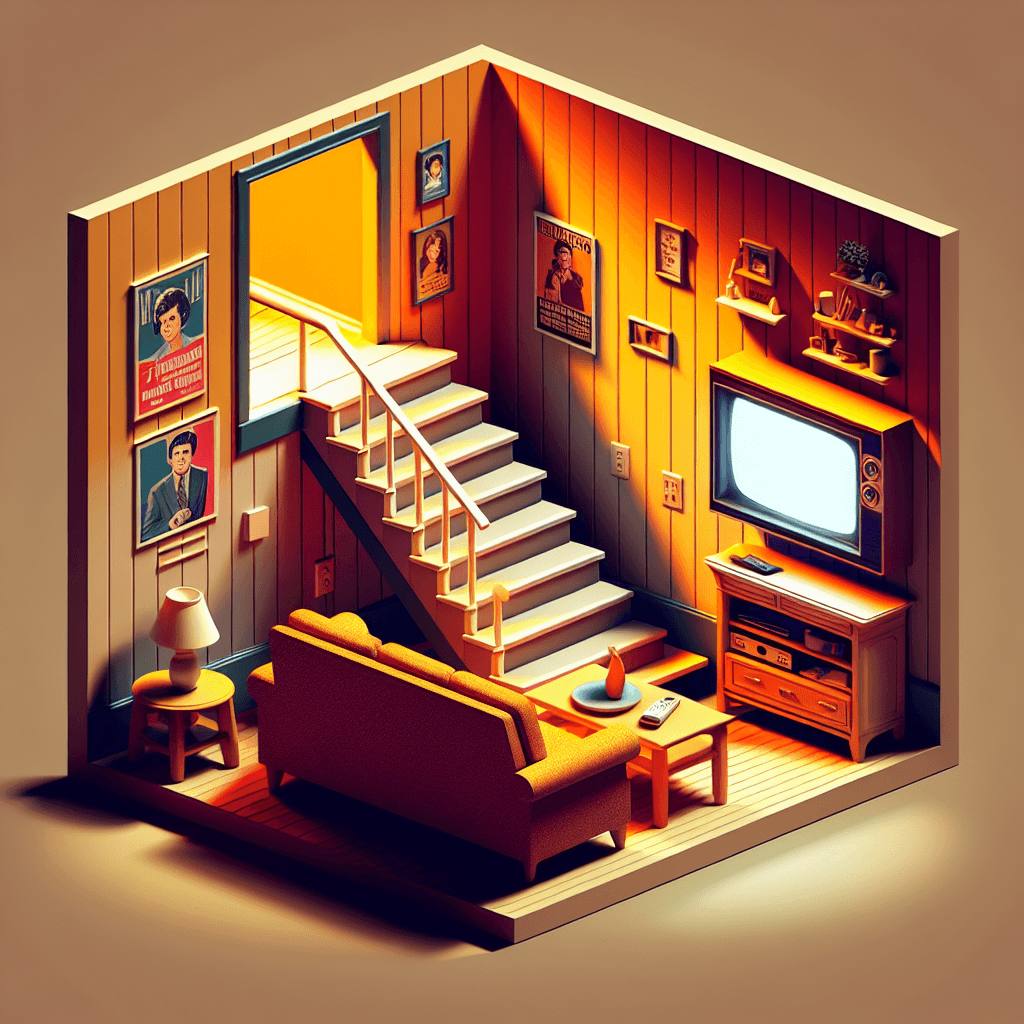Why do TV sitcom living rooms often have stairs that seem to lead nowhere
Ever notice that random staircase in your favorite sitcom that doesn't seem to lead anywhere? It’s not a design flaw, but a brilliant production secret that makes every scene more dynamic.


Too Long; Didn't Read
TLDR: Sitcom stairs lead nowhere because it's a TV set. They are a practical tool for staging, creating dynamic entrances and exits for actors, and adding visual depth to make the fake home look bigger without the expense of building an actual second floor.
The Stairway to... Where? Why TV Sitcom Living Rooms Often Have Stairs That Seem to Lead Nowhere?
Have you ever been watching a classic sitcom like The Fresh Prince of Bel-Air or Everybody Loves Raymond and found yourself wondering about the set? Specifically, that prominent staircase in the living room. A character runs up it in a huff, another makes a grand entrance coming down, but where does it actually go? In the world of television production, this architectural feature is often humorously dubbed the "stairs to nowhere." Far from being a design flaw, this common element is a masterful and intentional choice that serves several crucial functions in crafting the sitcoms we know and love. This post will walk you through the practical and creative reasons why these staircases are an unsung hero of television set design.
The Illusion of a Home: Working with the Fourth Wall
The primary reason for the seemingly pointless staircase lies in the fundamental nature of a television set. Most sitcoms are filmed on a three-walled soundstage in front of a live studio audience or a multi-camera setup. The "fourth wall" is the invisible barrier where the cameras and audience are located, looking into the world of the show.
Building a complete, two-story house on a soundstage is not only expensive but logistically impossible. A full second floor with a ceiling would block the massive lighting rigs suspended above the set and obstruct the view of the cameras, which need to capture the action from multiple angles. The staircase is a clever piece of visual shorthand. It creates the powerful illusion of a larger, multi-story home without the physical structure. The small landing at the top of the stairs is often all that exists, leading to an off-screen area where actors can enter or exit the scene.
A Director's Best Friend: The Power of Blocking
In television and theater, "blocking" refers to the precise staging and movement of actors on set. A simple, flat room can be visually uninteresting and limit a director's options. A staircase, however, is a dynamic and versatile tool.
- Creating Levels and Visual Interest: Stairs break up the horizontal plane of the set. Placing actors at different heights—one on the couch, one standing, and one on the stairs—creates a more complex and visually engaging composition for the viewer.
- Dynamic Entrances and Exits: A character storming off "to their room" is far more dramatic when they ascend a staircase than if they just exit through a side door. Likewise, a character making a grand entrance for a party or a date by descending the stairs is a classic cinematic trope that instantly adds importance to the moment.
- Facilitating Comedy and Drama: The staircase is perfect for comedic gags. It's a prime spot for characters to eavesdrop on conversations in the living room, for physical comedy bits involving tripping, or for a slow, dramatic reveal. It provides a natural focal point for the action.
Practical Production and Clever Design
Beyond the artistic benefits, the staircase serves critical production purposes. It acts as a major artery for the set, allowing actors to get on and off stage quickly and efficiently from a central point. For shows filmed in front of a live audience, this flow is essential to maintain the pace and energy of the performance.
Furthermore, the design itself is a testament to the ingenuity of production designers. They must create a space that feels like a real, lived-in home while accommodating the technical needs of a television studio. The staircase adds architectural detail and a sense of depth, making the three-walled box feel more authentic and expansive. It suggests a history and a life beyond what we see on screen—bedrooms, bathrooms, and private spaces that enrich the world of the show without ever needing to be built.
Conclusion
So, the next time you're watching a beloved sitcom and see a character head up that familiar staircase, you'll know the secret. Those stairs don't lead to nowhere; they lead to a world of clever production design, dynamic storytelling, and television magic. They are a deceptively simple solution to the complex challenge of building a believable world within the confines of a soundstage. This iconic feature is a perfect example of how the unseen craft of television production directly shapes our viewing experience, turning a practical limitation into a powerful and enduring storytelling device.
More Articles

Why can a flame cast a shadow if it produces light?
It seems to defy logic, but a bright flame can cast a dark shadow. Discover the counterintuitive physics that explains how a source of light can simultaneously block it.

Why do some goats completely freeze up and fall over when startled?
It looks like a dramatic faint, but these goats never actually lose consciousness—discover the bizarre genetic glitch that causes their muscles to instantly go rigid and send them toppling over.

Why do scorpions glow a brilliant blue-green color under an ultraviolet light?
A scorpion's deadly sting is famous, but its most baffling secret is the brilliant blue-green glow it hides in plain sight.